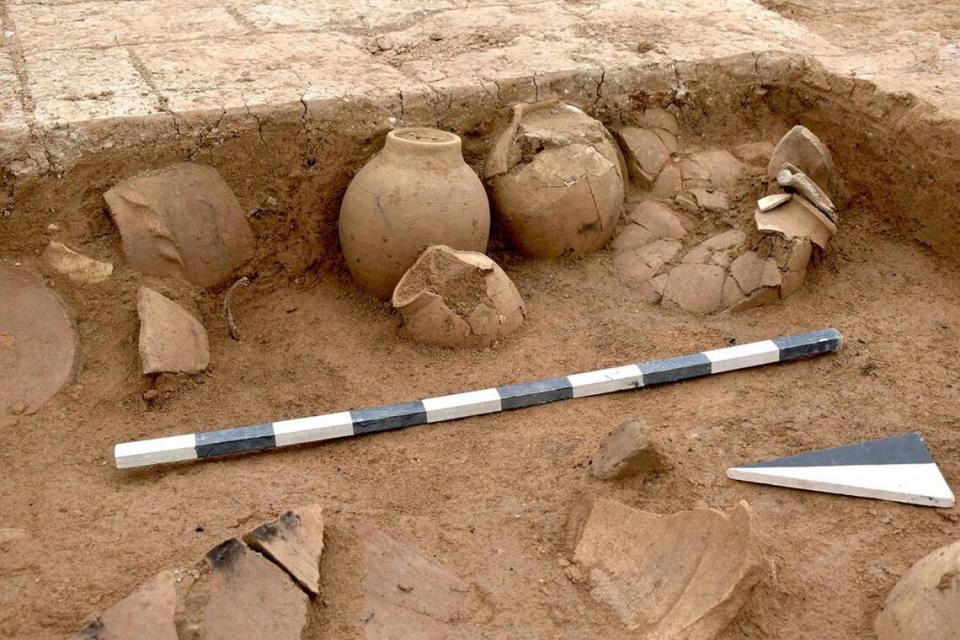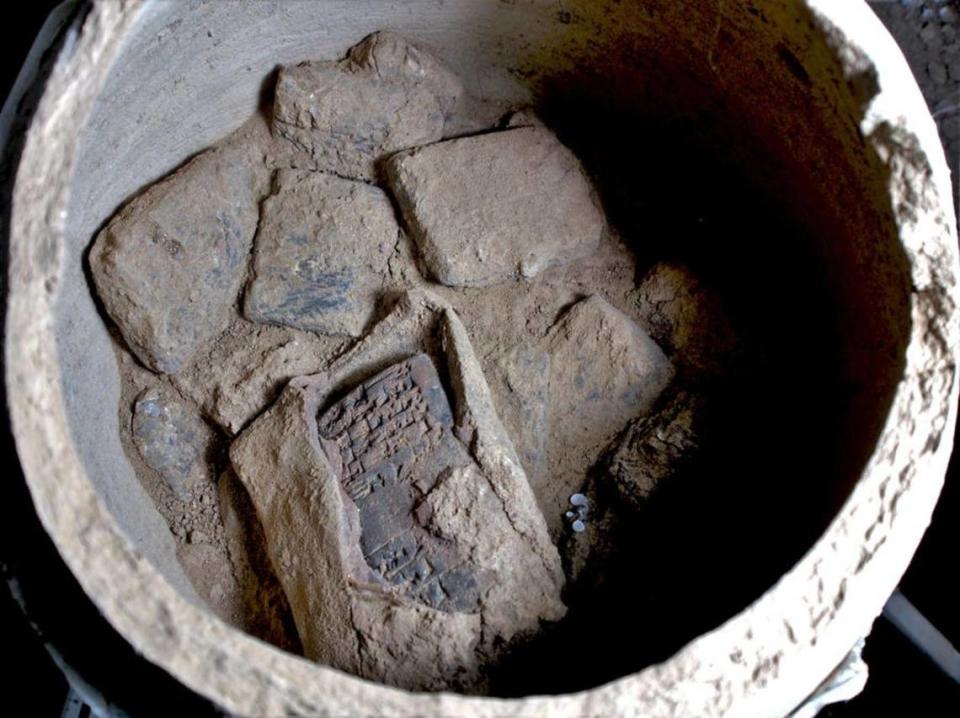Ancient city with ‘massive’ palace emerges from lake in drought-stricken Iraq
Years of relentless drought have recently exposed multiple cities typically submerged in water reservoirs in Iraq.
The waters of the Mosul dam – located near Kemune in northern Iraq’s Kurdistan region – relinquished an ancient city, a team of German and Kurdish archaeologists announced May 30 in a news release.
The 3,400-year-old “urban center” could be Zakhiku, an “important center in the Mittani Empire” that ruled modern-day Iraq from 1550-1350 B.C., researchers said.
Tan-ish brown and dusty, the ruins of the city boast a palace, fortified walls and towers, a “monumental, multi-storey” storage facility and industrial building, researchers explained. From above, the buildings look grid-like — squared-off indents in an otherwise rocky mound, photos show.
Despite decades underwater, the site is stunningly well-preserved, partially due to an earthquake that destroyed the city in 1350 B.C., researchers said.
Big findings also came in small packages at the excavation site. Tucked in the corner of the storage facility, researchers found five pottery vessels, photos show.

Tucked inside the pottery vessels, they found more than 100 cuneiform writing tablets, per the release. One notable tablet, possibly a letter, remained partially enclosed in its original clay envelope, photos show.
“It is close to a miracle that cuneiform tablets made of unfired clay survived so many decades under water,” researcher Dr. Peter Pfälzner said in the release.

About 20 miles east, another submerged city vied for attention, lurking visible but still unreachable beneath the waters of Dohuk Dam, photos from Ismael Adnan on Aug. 31 showed.
Gary Qasruka, a city abandoned in 1985, has surfaced for the fifth time, Wired reported on Aug. 29.
Decades underwater have left the village ruins “algae-painted and shell-marked,” according to Wired.
Iraq’s devastating drought has wreaked havoc on the northern part of the country since 2021 and the southern part for several years longer, the United Nations Office for the Coordination of Humanitarian Affairs (UNOCHA) said in a July 15 report.
The droughts have displaced more than 34,600 people and affected at least 7 million people, UNOCHA reported July 27.
Battered by “soaring temperatures, insufficient and diminishing rainfall, intensified droughts and water scarcity, [and] frequent sand and dust storms,” Iraq is one of the countries most vulnerable to the negative consequences of human-induced climate change, the UNOCHA announced in an Aug. 9 report. There are no estimates for when conditions are expected to improve.
Prehistoric Viking weapons revealed as glaciers melt in Norway during heat wave
Roman ruins reappear from river in drought-stricken Europe almost 2,000 years later
Centuries-old religious statues emerge from shrinking Yangtze river in China’s drought

